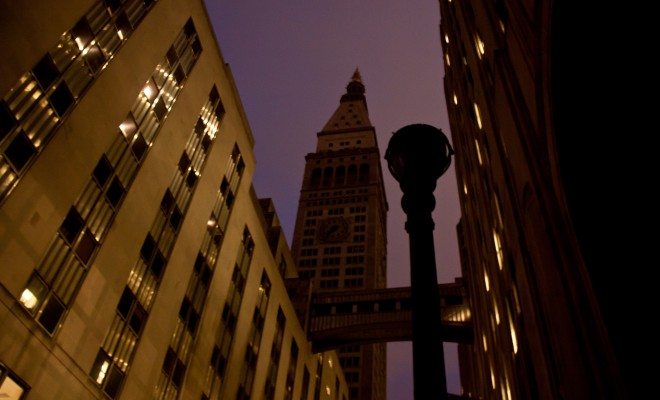 Image courtesy of [Chris Goldberg via Flickr]
Image courtesy of [Chris Goldberg via Flickr]
Energy and Environment
Lights Out: These Small Steps Help Conservation Efforts
New York state Governor Andrew Cuomo recently announced the New York State Lights Out Initiative, which is a program that couples with the Audubon Society’s efforts to reduce the light pollution that disorients birds during peak migration seasons. From April 15–May 31 and August 15–November 15 state owned buildings will turn off non-essential outdoor lighting from 11 PM to dawn. This small measure will make a big difference directly for the birds, but will also have many indirect implications in favor of conservation efforts.
A phenomenon called Fatal Light Attraction causes migratory birds, who often navigate with the stars, to become disoriented due to all the specks of light on the ground. Estimates suggests that between 500 million and one billion birds die annually as a result, mainly through flying into windows, walls, or the ground. These are direct deaths; considering that these birds are on their way to breeding grounds at the time, one can argue that the damage to their populations reverberates in the form of a lesser amount of breeding and eggs produced.

Image courtesy joiseyshowaa via Flickr
In addition to the mandatory outdoor light cutbacks, many buildings are being encouraged to draw their blinds and reduce indoor lighting when possible as well. Furthermore, private citizens are welcome to participate in any or all of these measures. It is also worth noting, from a non-bird but a general conservation standpoint, that these actions will reduce the consumption of electricity for a substantial amount of hours over the course of many months. This in and of itself is a gain as well.
As a supplement to the Lights Out measure, Governor Cuomo launched an I Love New York Birding website; a site with a plethora of information regarding bird watching techniques, ideal locations, and other information of a relevant nature. This way, people can become more educated on the importance and beauty of our birds and become more engaged with nature.
Direct engagement with nature by the populace is one of the most important measures that can be taken in the name of conservation. In addition to the increases in pollution, consumption, and other ailments of modern society that directly damage the environment, when people tend to feel more detached from the natural world it indirectly suffers from that attitude. The more people feel that nature is all around them, interact with the ecosystem, or spend time immersed in nature, the more likely they are to value and protect it. This is not an abstract theory. A study by Cornell University demonstrated that bird watchers are among the largest demographics to support conservation. While factors such as age, education, and political ideology played roles as well, they were dwarfed by influences that involve direct interaction with nature.

Image courtesy of the U.S. National Archives via Flickr
Thus the Lights Out initiative targets one of the key draws to conservation. Yet one does not have to be a bird watcher in order to care about the environment and take measures in its defense. While other outdoor activities such as hiking, biking, and water sports may also lend themselves in a similar fashion to a conservation ethos as bird watching does, any sympathetic sentiment is productive to these objectives. In the meantime, the actual act of turning off these lights will certainly benefit the local bird populations. This is a great program, and hopefully it becomes a tradition.
Feature image courtesy of [Chris Goldberg via Flickr]








Comments